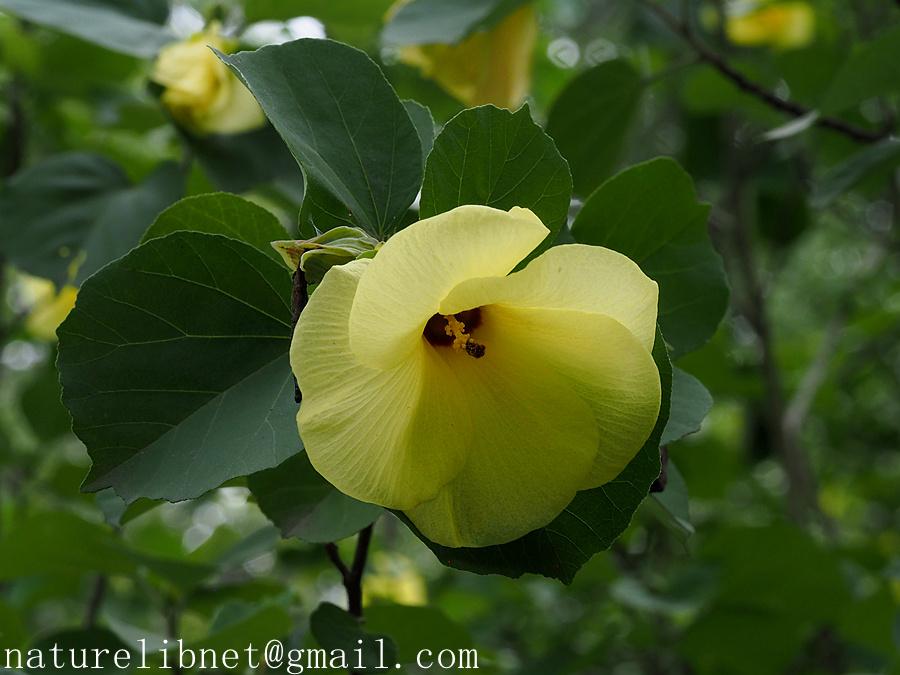- Scientific Name: Hibiscus hamabo Siebold & Zuccarini
- Ref:Fl. Jap. 1: 176. 1841.
- Synonym:
Hibiscus tiliaceus Linnaeus var. hamabo (Siebold & Zuccarini) Maximowicz;
Talipariti hamabo (Siebold & Zuccarini) Fryxell.
- Chinese Common Name: 海滨木槿 hai bin mu jin
- Family:Malvaceae
- Genus: Hibiscus
- Distribution:Coastal sands; near sea level. Zhejiang [Japan (Bonin and Ryukyu Islands), Korea; cultivated in India and Pacific islands (Hawaii)].
- Photo:06/22/2019, Zijingang campus, Zhejiang University
Trees or shrubs, deciduous, 1-5 m tall, young stems softly stellate pubescent, stellate hairs 0.5 mm or less. Stipules foliaceous, oblong-ovate, ca. 1.5 × 1 cm, deciduous; petiole 1-2.5 cm; leaf blade orbicular to broadly obovate, not lobed, 3-6(-7) × 3.5-7(-8) cm, abaxially densely whitish puberulent, adaxially sparsely and minutely stellate pubescent, basal veins 5-7, base cordate, margin irregularly crenulate to subentire, apex abruptly acuminate; abaxial nectary at base of midrib. Flowers solitary, axillary, or by abortion or reduction of upper leaves in a few-flowered terminal raceme. Pedicel 3-10 mm, with densely mixed simple and stellate hairs, accrescent in fruit. Epicalyx cup-shaped, ca. 1 cm, lobes 8-10, connate for 1/2 of length, narrowly triangular. Calyx campanulate, 1.8-2.1 cm, deeply 5-lobed, longer than epicalyx; nectaries present, obscure. Corolla showy, yellow later turning orange-red, with dark red spots in center, 5-12 cm in diam.; petals obovate, 4-5 cm, stellate pubescent abaxially. Staminal column 1.5-2 cm, glabrous, apical 2/3 antheriferous, ca. 1/2 as long as petals. Style branches longer than staminal column; stigma capitate. Capsule ovoid, 2.5-3.5 cm, densely brownish hirsute. Seeds reniform, ca. 4.5 mm, minutely papillate (appearing glabrous). (Flora of China)
